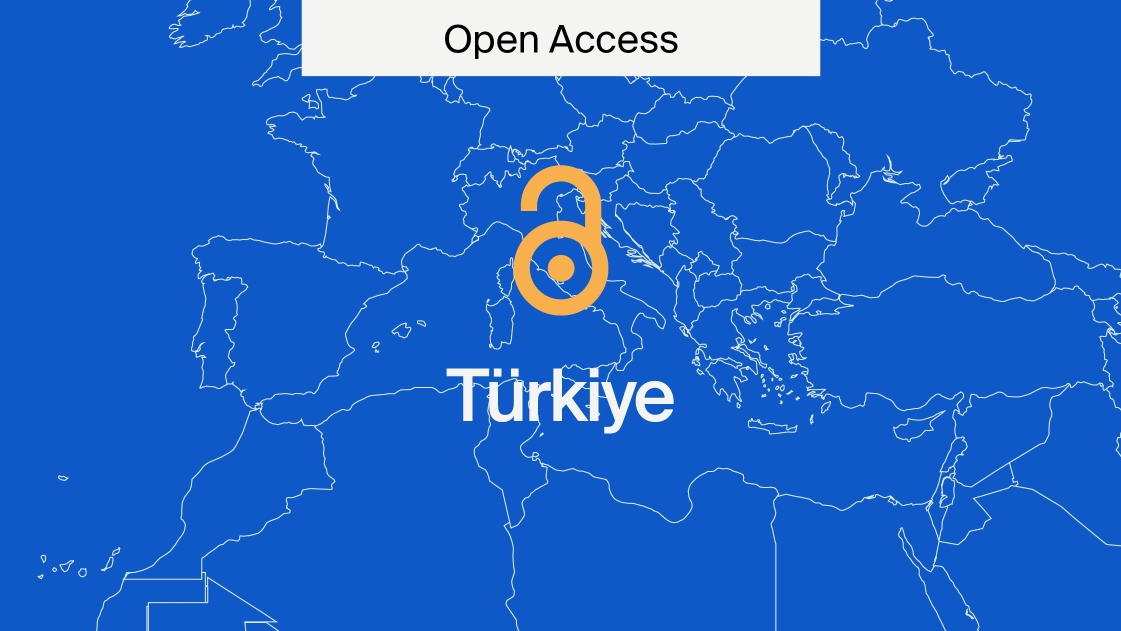
Open Peer Review: Making Scientific Research More Transparent
by Facundo Santomé and Jonathan Steffen
When thinking about Open Peer Review, we should think about the following quotation.
“As you sit on the hillside, or lie prone under the trees of the forest, or sprawl wet-legged on the shingly beach of a mountain stream, the great door, that does not look like a door, opens.”
This quotation, from Stephen Graham’s 1926 classic The Gentle Art of Tramping, may seem a curious way to commence a discussion of the benefits of the Open Peer Review process. It contains, however, an observation that could be a motto for the Open Science movement: “The great door, that does not look like a door, opens.”
Graham is thinking of the pleasures of lying under an open sky and following whatever thoughts might float into one’s consciousness. The “great door”, which does not resemble a door, “opens”. Far from the laboratory bench or the seminar room, the author imagines that understanding will come to minds that are open to receive it. The essential is a preparedness to engage with the world without expectation or prejudice. It is this openness which is at the heart of the Open Peer Review Process.
Open Science and Open Access
Open Science is at the heart of Open Access (OA) publishing. In the definition from UNESCO, “Open Science is the movement to make scientific research and data accessible to all. It includes practices such as publishing open scientific research, campaigning for open access and generally making it easier to publish and communicate scientific knowledge. Additionally, it includes other ways to make science more transparent and accessible during the research process. This includes open notebook science, citizen science, and aspects of open source software and crowdfunded research projects.”
UNESCO goes on to define four key advantages of this movement:
- Greater availability and accessibility of publicly funded scientific research outputs;
- Possibility for rigorous peer-review processes;
- Greater reproducibility and transparency of scientific works;
- Greater impact of scientific research.
Open Peer Review is designed to facilitate the “rigorous peer-review process” specified here. It ensures that science published via Open Access is thoroughly scrutinized and adjudged scientifically valid before being shared.
The Drive towards Open Peer Review
Human nature, however, dictates that many institutions with a long and worthy history are not free from fault or blemish. The same goes for anonymous peer review. The then editor of the British Medical Journal (BMJ), Richard Smith, announced in 1999 that the journal would be abolishing it, offering the rationale that “a court with an unidentified judge makes us think immediately of totalitarian states and the world of Franz Kafka.”
It may be argued that the editor of a given journal is the ultimate judge of whether or not a submission should be published, and that the reviewer merely offers guidance to help the editor formulate an opinion, but the point is clear: what is ultimately at issue here is accountability, and proponents of the Open Peer Review process will argue that accountability is not possible without transparency.
As supporters of the Open Science movement, MDPI encourages the Open Peer Review process. We believe it offers substantial benefits to the scientific community as a whole because it helps contextualize scientific research in a transparent manner and it encourages open discussion of new findings.
Open Peer Review: Modalities
Perhaps surprisingly for a concept that has been around for at least 30 years, the term ‘Open Peer Review’ does not have a universally accepted definition. Here we point to what Tony Ross-Hellauer said.
“While for some the term refers to peer review where the identities of both author and reviewer are disclosed to each other, for others it signifies systems where reviewer reports are published alongside articles. For others it signifies both of these conditions, and for yet others it describes systems where not only ‘invited experts’ are able to comment. For still others, it includes a variety of combinations of these and other novel methods.”
At MDPI, we work mainly with one variant of this broad definition. It starts with a traditional peer review process (closed), after which the review reports (including the identities of the reviewers in some cases) are published alongside the authors’ responses and the article.
There has been extensive debate as to whether reviewers might be less willing to review if they know their review might be published (with or without their name). We have not seen this happening, although it is true that the number of signed review reports is still low compared to open review reports published anonymously. Last year, a total of 14,880 review reports were published with the name of the expert who reviewed the article.
Benefits of Open Peer Review
As indicated, one benefit of instilling more openness in the peer review process is greater transparency and trust. It provides the scientific community with a window into the editorial decision-making process.
Transparency is one of the fundamental pillars of science. Open Peer Review offers researchers the opportunity to have a fully transparent process guiding the assessment of their work. Having reviewers’ reports published alongside the article also helps contextualize research and gives readers the benefit of additional expert opinions.
Increasing transparency in the peer review process also leads to more constructive peer reviews. It encourages high-quality comments, generally improving the overall quality of both the review and the article itself.
Credit for reviewers is another of the main benefits. Reviewing papers for submission is demanding and time-consuming, and Open Peer Review allows reviewers to gain credit for their work. It also provides insight in the form of feedback to authors.
Open Peer Review at MDPI
The journal Life was a pioneer in offering this opportunity to its authors in 2014. The first article openly published with peer-review reports was a review by Nobel Laureate Werner Arber. The review reports were published as supplementary material to the review.
This practice soon proved a popular option and the initiative was extended to 14 journals the same year. By 2018 the option of Open Peer Review for submitted papers was available across the whole MDPI portfolio.
Authors published in MDPI journals can choose to publish review reports and author responses with the published paper (open reports). Reviewers have the choice to have their names listed on their published report (open identity).
In 2020, MDPI published a total of 34,293 articles in Open Peer Review. This accounted for 21% of the total number of articles published in that year. However, only 14,880 reports were published with open identity.
This initiative has taught us that authors’ acceptance of full transparency varies across different disciplines.
Authors in specific fields of biology and medicine are more likely to welcome such openness. This year, journals such as BioTech (56%), European Burn Journal (58%), Journal of Developmental Biology (41%), Livers (41%), Epigenomes (41%), Geriatrics (40%), Diabetology (40%), Infectious Disease Reports (40%) or the International Journal of Neonatal Screening (40%) among others, published above 40% of their articles in Open Peer Review format.
In disciplines such as the physical sciences, though, the percentage of Open Peer Review has been much lower. Some of MDPI’s leading journals in this subject, such as Energies (3%), Symmetry (3%), and Mathematics (3%) have seen less than 5% of their articles published together with their reports in 2021.
Working in the Service of our Contributors
MDPI will continue encouraging authors to choose Open Peer Review. However, we will remain flexible towards them and also towards reviewers regarding their preferences. Our goal is to offer the best possible scientific publishing service. And make sure that the peer review process is rigorous, transparent, and benefits the scientific community as whole.
Lying on a hillside like Stephen Graham and staring at the sky in the hope that the great door which is not a door might open is very different from working in a laboratory, or in the field, or, indeed, in the editorial office of a scientific publisher. Yet so many burning questions exist to which science has yet to find answers. As a leading Open Access publisher, we believe in encouraging openness of thinking and communication in addressing those unanswered questions. The Open Peer Review process is fundamental to that aspiration.











it’s necessary to take an open peer review to ensure high quality of the submission.
it’s necessary to take an open peer review to ensure high quality of the submission.